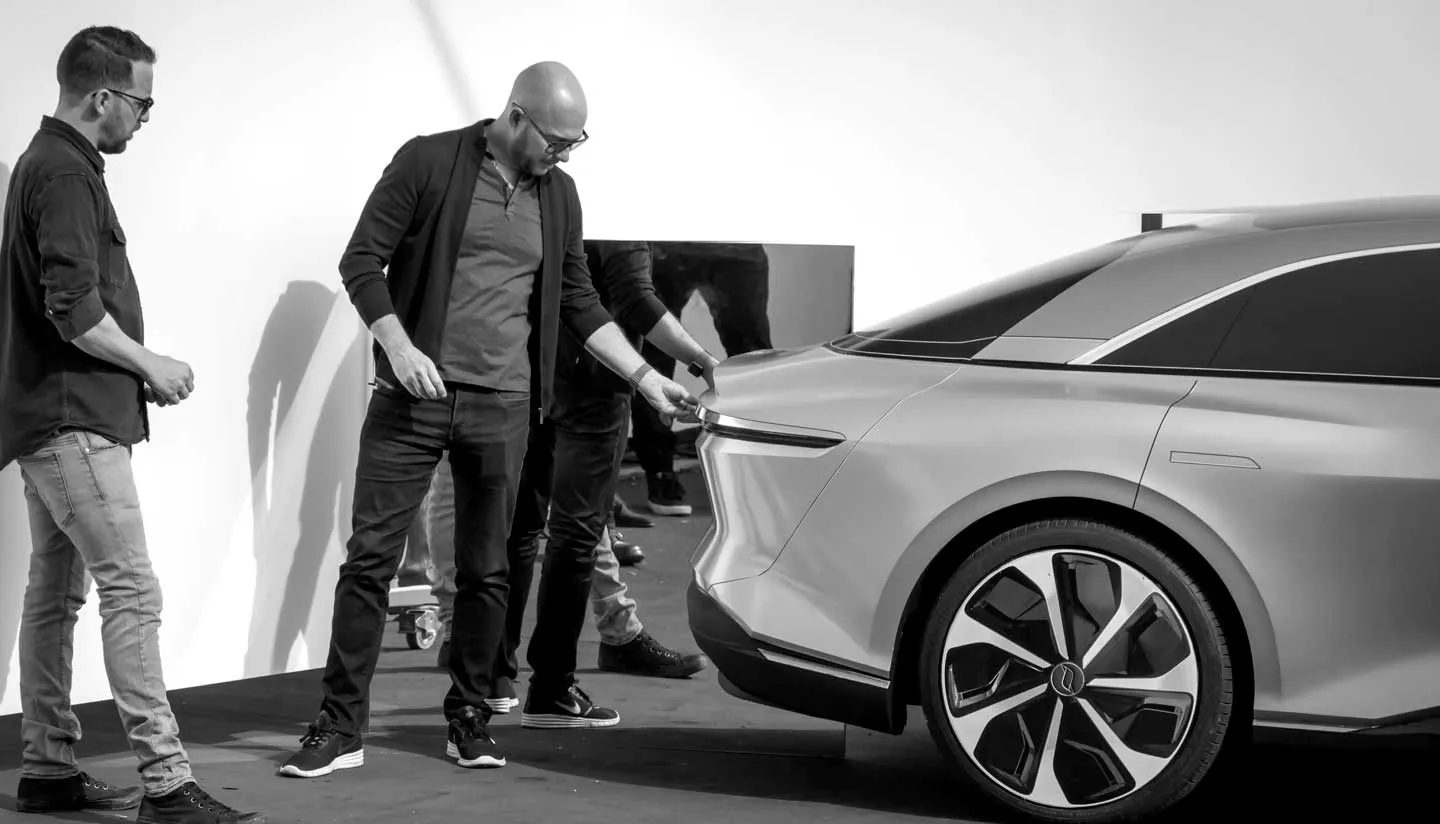Designing the Lucid Air, Part One
Inspiration and the Opportunity to Rethink Design
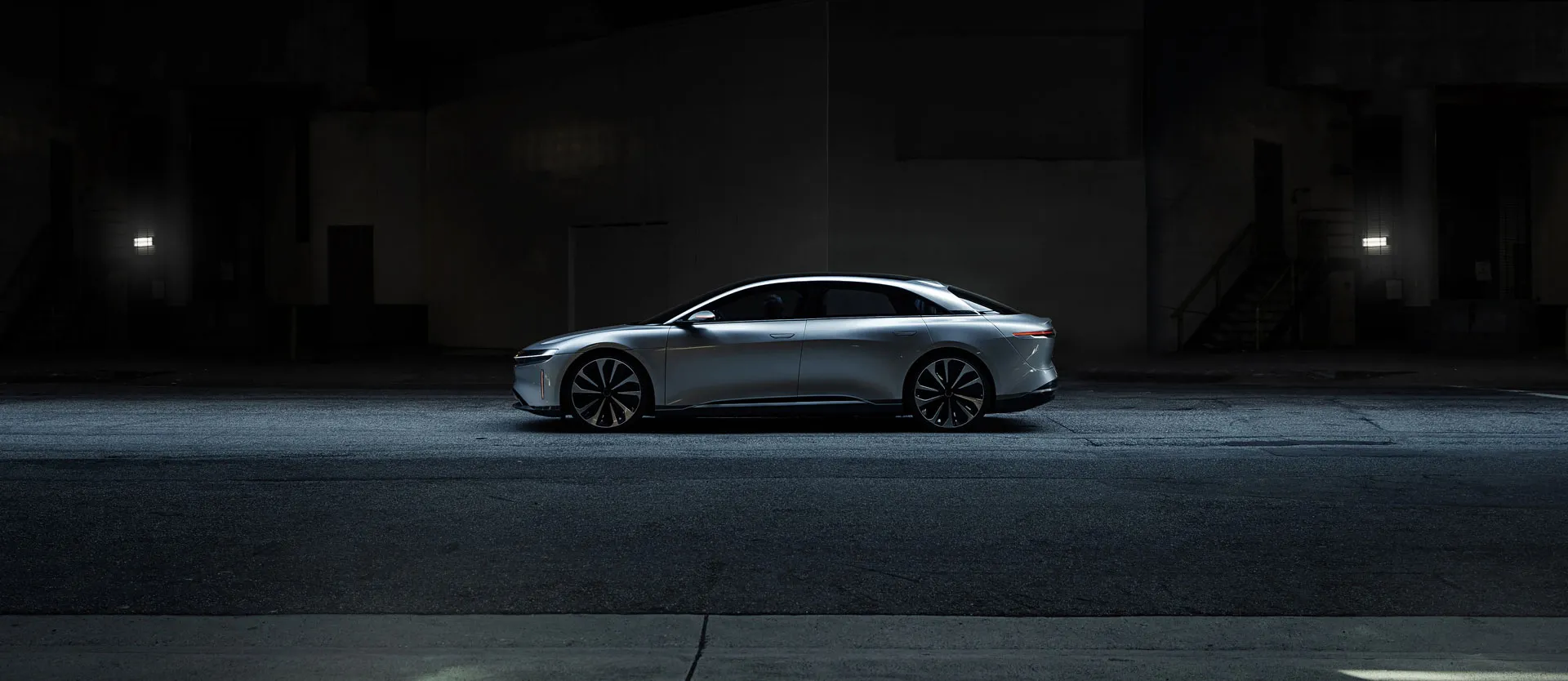
Creating a groundbreaking vehicle from a clean sheet is an opportunity to radically rethink the design process. In this two-part blog, Derek Jenkins, Lucid’s Vice President of Design, discusses the inspiration for and the process of designing the Lucid Air.

Before we talk about inspiration for the Lucid Air, let’s talk about the company. You joined in 2015?
Yes. Even before I took the job here, the idea of a California brand built around new technology and electrification really resonated with me. I saw that this is where the broader car industry is headed and that California was at the forefront of the movement.
I’m from the traditional automotive industry, and I’ve been working on traditional cars my entire career, so when the Lucid first approached me, I saw it as an opportunity to be part of the team leading the next era of the automobile.
Was Lucid Air truly a “clean sheet” design?
Because we're an entirely new company, we don't have any legacy to build on. In design school, they teach you to understand who you are, where you came from, and what you’re building on to ensure you are creating a product that supports the brand. At Lucid, we don’t have any of that.
We embrace it, because there’s no preconceived notion of what our car should look like, there's no design DNA or corporate DNA that we're building off of. From a design standpoint, that is wonderful because we can create it. We had to establish in our process what we were and what we were not. That was an exciting process, but also daunting because we had to commit to creating our own guidelines.
We already had ideas. This is a progressive car, and we knew that would be reflected in the design language. But it was also established through Peter’s [Rawlinson, Lucid’s CTO] vision for the layout of the car: the miniaturization of the drivetrain, and optimizing for the occupant space. We built the story, the brand identity, and ultimately the design language around that philosophy.
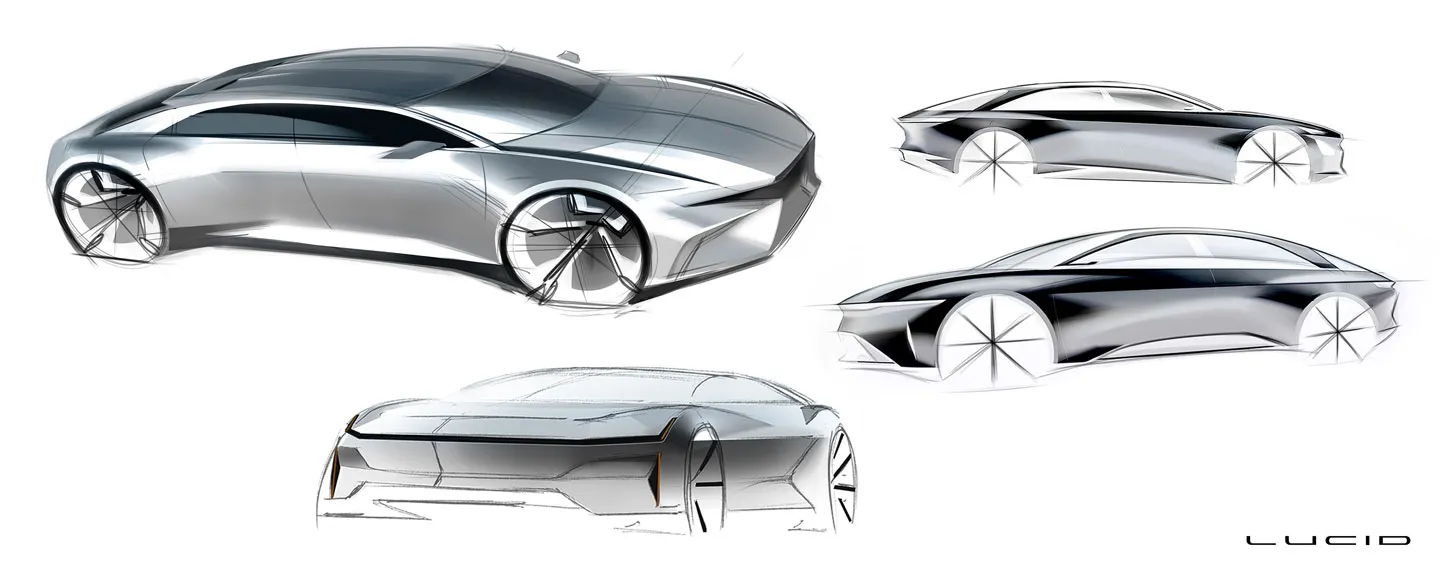
What were some of the early inspirations for the design of the Lucid Air?
Early on we looked at other really pure objects that we could relate to. Peter and I are big fans of aircraft, and it made sense as a starting point. It’s an honest form of design that is sleek and efficient. Aircraft is driven by its function, by aerodynamics and lift, and yet somehow there's a beauty in that.
Additionally, an airplane is more of a monovolume, meaning the body of the plane is essentially dedicated to passengers. So there was a metaphorical and a literal connection to our car in that regard.

How about Lucid’s home state of California?
California design inspired us, particularly its modernist architecture. There is a kind of California modernism that's existed since the forties and fifties. It relates to the climate, so there’s a sense of indoor and outdoor, an openness and airiness, and a lightness. There is a lot of glass and honest materials that manage to be both sophisticated and rich but at the same time light and approachable.
I grew up in Southern California around all of the major automotive grassroots trends, from old-school hot rodding to modern import vehicle tuning and motorcycles. Even today some of the most progressive and well-known customizing shops are still based out of Los Angeles. They’ve set style trends that even traditional car companies follow.
There are segments of that California grassroots customizing scene which are more understated, clean, and minimal, and those are the subcultures that inspire us.
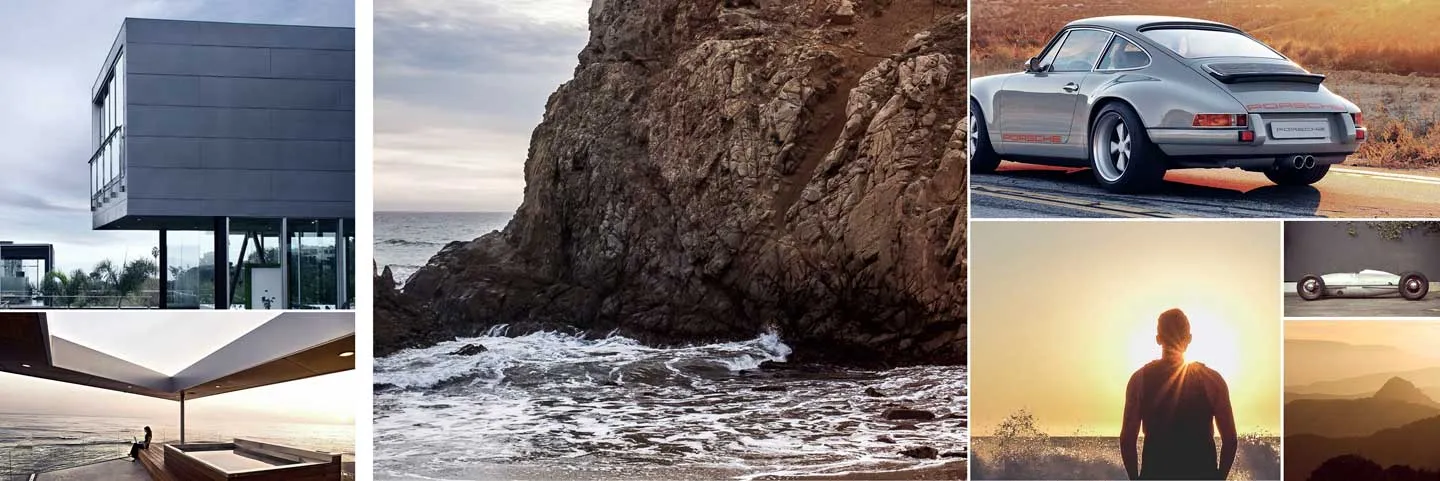
As you considered these sources of inspiration, what themes emerged?
As we started thinking about this clean, modern, aircraft-inspired look, two words continued to surface: seamless and effortless.
We wanted the car to have a seamless feeling about it. Pure body, pure forms, not too many cut lines or details. A simple one-band graphic for the front of the car, a one-band graphic for the tail lights of a car, a simple and clear cabin, and hardly any other details or elements on the bodywork. By contrast, today's mainstream automotive design has lots of vents and holes and scoops and lines… so many lines! We didn't want that. We wanted to keep it pure and seamless.
The other term that kept surfacing was effortless. We didn’t want the car to look like it was this hyper-aggressive, pumped-up thing. We wanted it to be elegant, light and streamlined, but it still needed to look fast. Again, much like a jet, fast in an effortless way. A very lean, elegant expression of speed. That influenced the shape and proportion of the car.
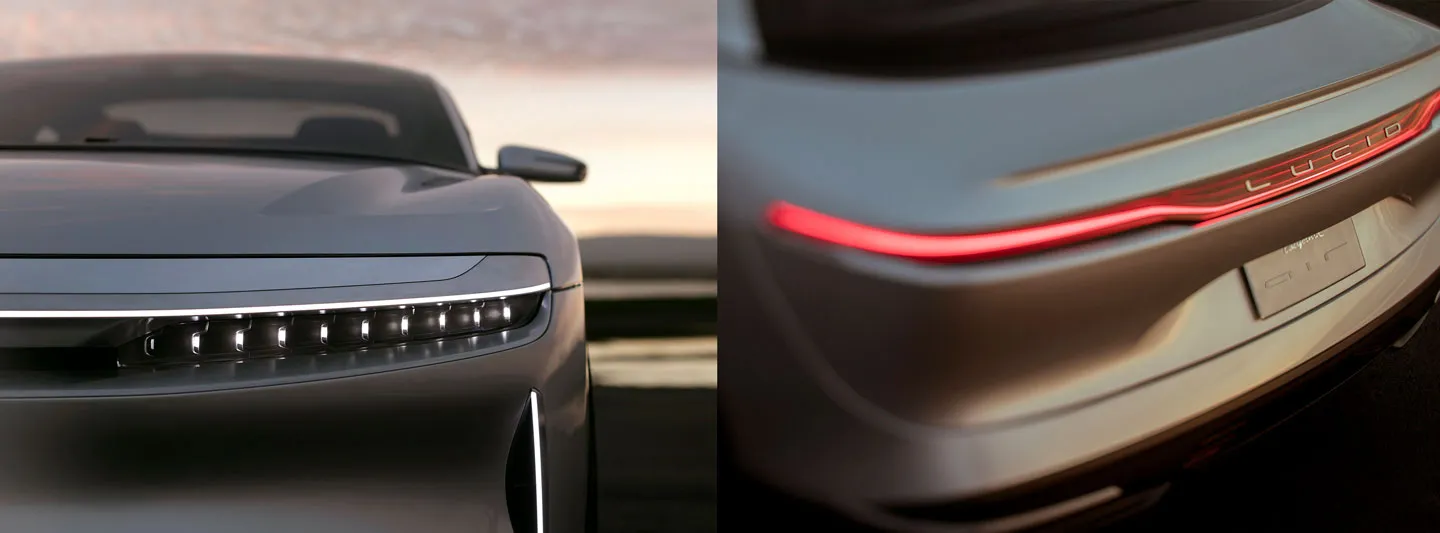
This doesn’t sound like a recipe for an “iPhone on wheels.”
No. On one hand, we want the car to be high-tech and future-facing, but we still want to capture emotion in the design. I know that there will be these anonymous kind of boxes and pods on the road in the future, and that's fine. That can be cool in a way. I just don't think that's Lucid, and I don't think that is even luxury.
We've always been trying to find this balance between heart and mind, between something emotional and high-tech. If you can find a good balance of those things, I think there’s a good chance that you’re going to attract a lot of people to a product.
The Air’s electric powertrain opens up new possibilities for design. How important was it for the Air to look different from internal combustion engine vehicles?
It's tremendously important. Throughout the history of the automobile, whenever there was a big transition in technology, whether it was body construction, safety, or aerodynamics, it was an opportunity to evolve the aesthetic. As a designer, to not take advantage would be a massive missed opportunity.
Electric drivetrain technology is now at a point that it can radically alter how we lay out and proportion the car, so the car has to look different. It’s cooled differently, the drivetrain requires less space, and aerodynamics are a priority. These changes have key technologies that are supporting them, and those should come out in the design of the vehicle. If they don’t, then you really aren’t taking advantage of the opportunity that has been presented to you.
I really believe that the job of any car designer is to create a design that communicates what the car is about, whether that's performance, technology, or something else. The design language is a form of communication to the customer, the passengers, or the person just watching the car drive by. We have to make sure that the design is expressive.
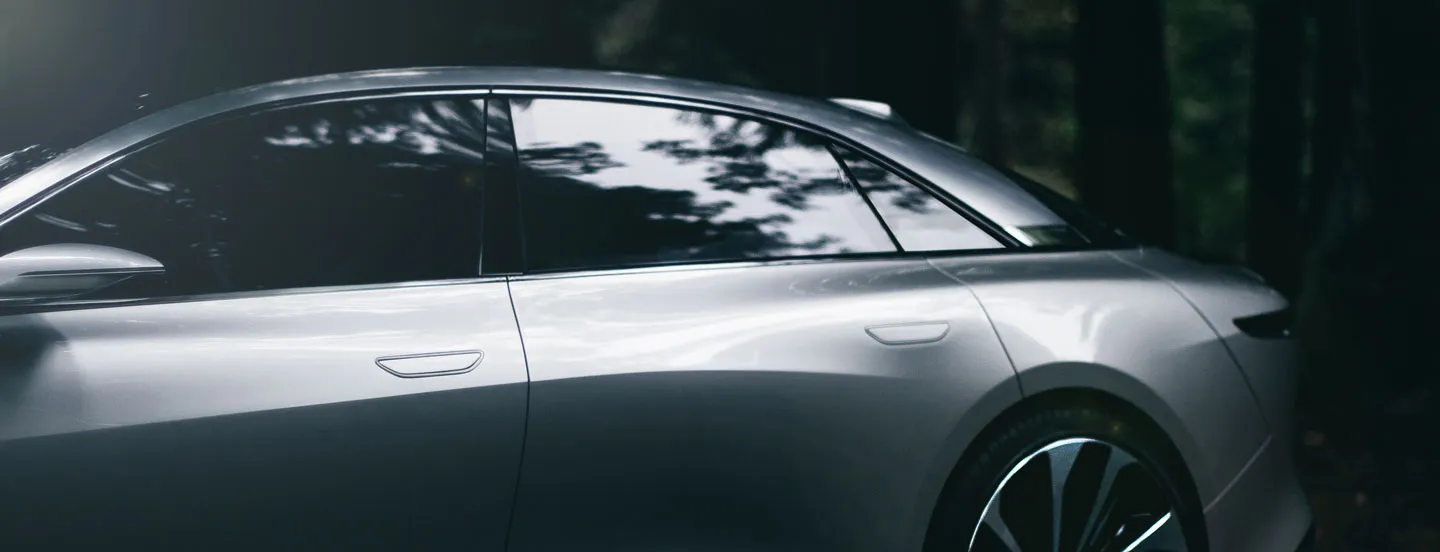
How futuristic can you go?
You always have to keep the customer in mind. I’ve seen designers come up with a cool sketch, and the team will say, “That's inspiring, that's cool, super fresh and futuristic.” But if you take two steps back and really analyze who will buy that, who commits to putting that in their driveway and have it represent them, is this the right thing to do?
The challenge is never how futuristic or different can we make the car. The challenge is how progressive and unique you make the car and still make it appealing. We like to design cars that we like. We see ourselves as customers. But as a designer, it's important to have a vision in your mind of who the actual buyer is. I’m a big believer in that. Otherwise, you might be a cult classic 30 years from now, but that's not going to help us today.
With the Lucid Air, I think we are bringing something fresh and unique that will look good for many years to come.
Part two of our conversation with Derek Jenkins goes in-depth on the team and design process that brought the Lucid Air to life.
